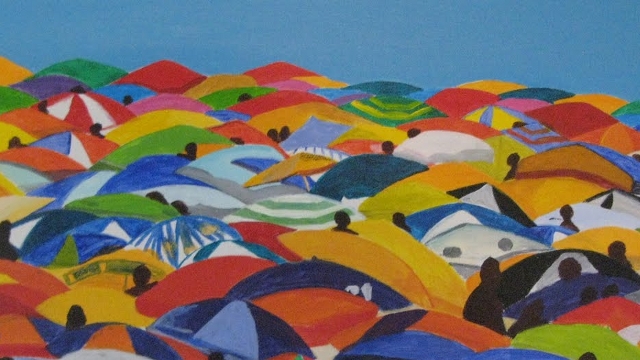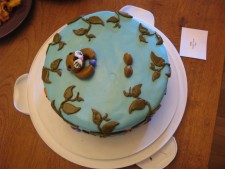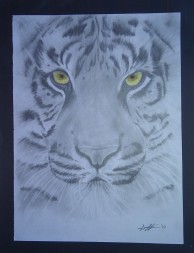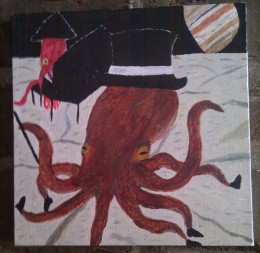
A painting of a cherry tree in full blossom adorns one wall. On a table beneath it, ceramic fingers reach from a blue-glazed ceramic basket. Opposite these hangs an intricately decorated guitar.

The third annual Hopkins Marine Station Amateur Art Show was held this past weekend in Monterey, California. Hopkins is Stanford University's marine biology satellite campus, next door to the Monterey Bay Aquarium, home to a tight-knit community of ocean-obsessed weirdos. (I've been one.) The overlap between colleagues, roommates, and friends is so thorough that you tend to share grocery lists and pipette tips with the same people. It’s hard to stop talking about science, even at bars.
"I thought an art party would really foster conversations outside of this normal routine," says Jason Ladner, who did his graduate work on coral genetics at Hopkins. Around year four, he got sick of thinking about science all the time and found an escape in art. "I figured there were probably other people that could use a similar escape"--and in 2010 the first Amateur Art Show and Garden Party was born. Ladner wrote in his invitation, "This is a very low-key event where the term 'amateur' is stressed and the term 'art' is very loosely interpreted." It was a hit.

At the party's third incarnation on April 14, 2012, scientists mingled over cups of sangria and reveled in their conversational freedom. Ladner has moved on to post-doctoral work and this party was hosted at the home of Judit Pungor, a graduate student studying octopus vision. One partygoer observed with wonder that very little of the art has a scientific theme. In addition to the guitar and the slightly disturbing ceramics, displays included hand-sewn clothing and a rainbow knitted blanket.
But not all scientists can suppress their nerdiness just because they're making art. Squid student Hannah Rosen (yes, she's in my old lab) painted an octopus tap dancing, with a squid on the piano. When asked, "Why not a tap-dancing squid and a piano-playing octopus?" Rosen answered, "The idea of a tap-dancing octopus just spoke to me."

